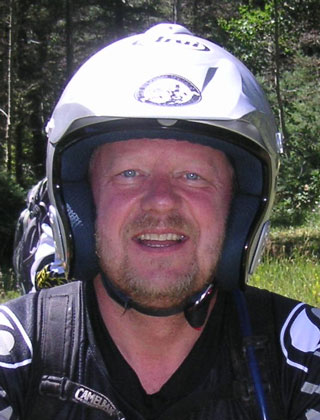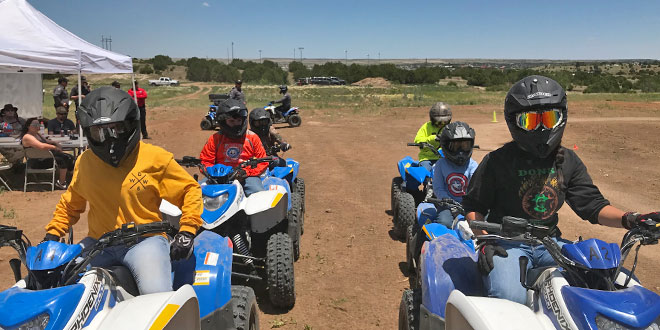In an interview with New Mexico Wildlife, Johnson talked about OHV and motorcycle riding on public lands in our state. In addition to his position with the Department, he has taught street motorcycle classes part-time for 14 years.

For years I was a public lands access activist in the OHV community, serving on the boards of the New Mexico Off-Highway Vehicle Alliance and the New Mexico Trials Association. I also participated in public hearings of the State Legislature prior to passage of the Off-Highway Vehicle Act in 2005 and amendments in 2009. That brought me in close contact with Game and Fish, and when I learned of the vacant OHV Education coordinator position, I applied and was hired in 2013. ?What do you like to do in your free time?
In my spare time I like to ride motorcycles, travel and read current affairs and science fiction. ?How did you get involved with OHVs?
In Grants in the 1970s, the motorcycle scene was taking off, spurred in part by the amazing movie On Any Sunday. There were lots of open riding areas around town. I got the bug from neighbors who let me borrow their machines.
In the Navy I served at shore stations in Hawaii and Guam, and I had street and dual-purpose bikes. After my enlistment ended, I got my first real dirt bike and started desert racing, becoming a moderately fast amateur class rider. With marriage and family, I decided the risks of racing were incompatible with fatherhood so I switched to motorcycle observed trials (a sport of slow-speed balance and precise machine control). I became intermediate class state champion before injury and age slowed me down.
?Do you have a favorite machine to ride?Motorcycling has become very specialized, with machines suited to specific purposes. I have five bikes, each for different types of riding: A Triumph Tiger Explorer for adventure touring and commuting, a KTM 350 for dual-sport (street and dirt) riding, Beta 300 and Montesa 250 trials bikes and a Harley-Davidson V-Rod cruiser I won in a fundraising raffle at my kids’ high school. ?What’s the best part about your job?
As when I was teaching the street motorcycle classes, it’s incredibly satisfying to help someone who is thinking about OHVs but feeling a bit intimidated by the challenge of the power and the risks. Giving them the basic skills and instilling a risk-aware attitude toward safe riding helps them to avoid the dangers and realize the benefits of riding. Seeing kids engaged in safe OHV fun and knowing you helped that along is even better, especially when that serves as a positive influence for an at-risk individual. ?How does someone find places to legally ride their OHV?
Here in New Mexico, most recreational riding takes place on public lands, but people don’t know how to access those lands legally. Part of my job is spreading the word about U.S. Forest Service and Bureau of Land Management riding opportunities and rules.
The Forest Service publishes a Motor Vehicle Use Map (MVUM) for each Forest or Ranger District where motorized travel is authorized – the MVUM is the legal document for what’s open. It’s each OHV user’s responsibility to obtain and carry a copy of the MVUM (paper or electronic) for the areas they want to ride. The paper maps are free and electronic copies are available for download. You can find geo-referenced PDF versions in the online stores for navigation applications such as Avenza.
The Bureau of Land Management (BLM) offers trail maps for OHV recreation areas such as Hackberry Lake near Carlsbad or Haystack Mountain northeast of Roswell. Contacting a local BLM district office is the best way to find out about rules for riding and conditions on the ground.
The Department OHV program website (http://www.wildlife.state.nm.us/ohv/) has a listing of OHV recreation areas in New Mexico, and our official brochure (http://www.wildlife.state.nm.us/download/ohv/OHV-New-Mexico-Brochure-2018.pdf) includes a map showing the areas with contact information for the responsible land management agencies.
 New Mexico Wildlife magazine Conserving New Mexico's Wildlife for Future Generations
New Mexico Wildlife magazine Conserving New Mexico's Wildlife for Future Generations
